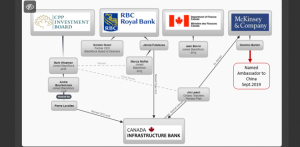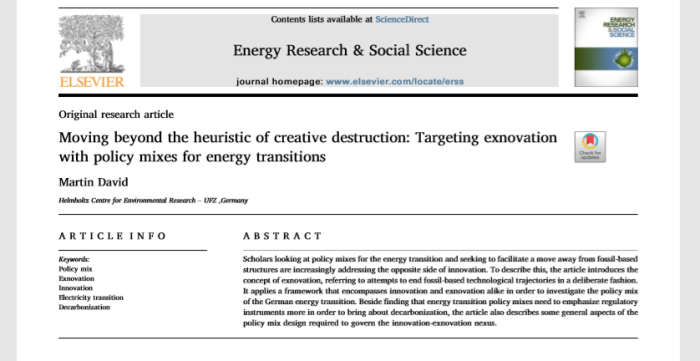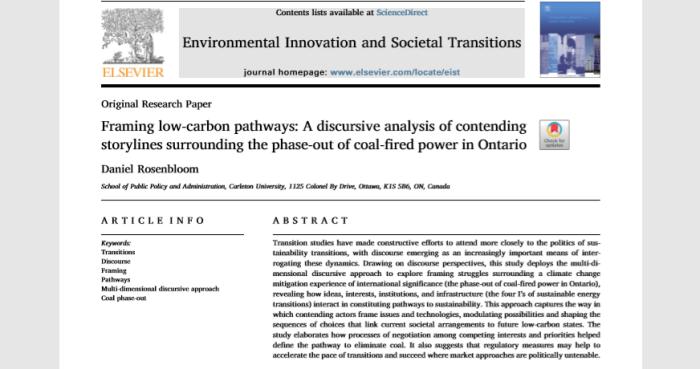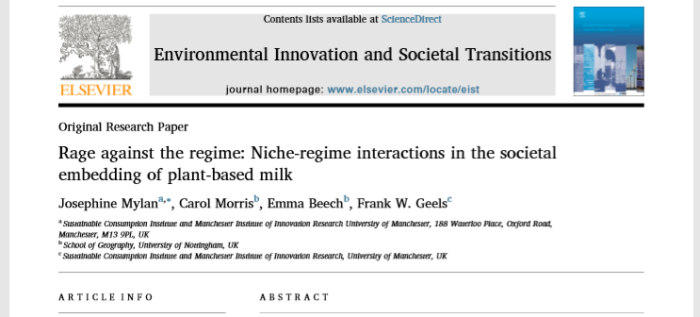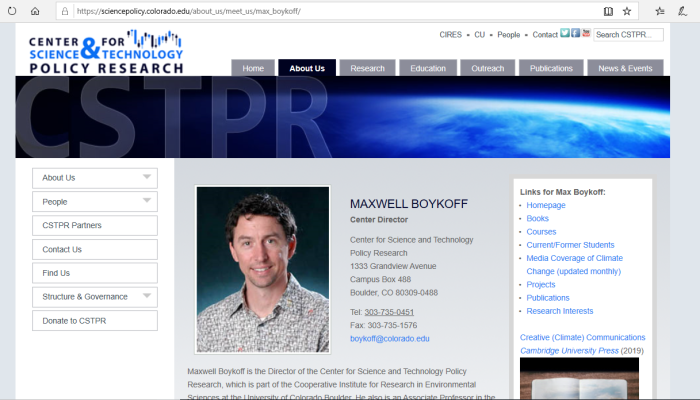(Peter Mackay pledges – in writing – no merger with Alliance if he wins)

(Peter MacKay sticking the knife in again?)
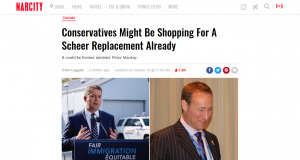
1. Important Links
CLICK HERE, for the Peter McKay/David Orchard alliance.
http://archive.is/DJ6M8
CLICK HERE, for CBC article on the broken deal.
http://archive.is/fAEgs
CLICK HERE, for ONSC denying Orchard’s application in full.
http://archive.is/niIKc
CLICK HERE, for an ONSC judge refusing costs for defamation.
http://archive.is/NgxG0
CLICK HERE, for Orchard’s ON Court of Appeal Factum.
http://archive.is/nsX0V/image
CLICK HERE, for ONCA dismissing appeal/cross appeal/motion.
http://archive.is/nBrOy
CLICK HERE, for Stevens v. CPC, Federal Court of Canada.
http://archive.is/iwCyI
CLICK HERE, for Stevens v. CPC, Federal Court of Appeal.
http://archive.is/6S6am
CLICK HERE, for a May 2019 article on replacing Scheer (before election).
http://archive.is/ZPFdF
CLICK HERE, for MacKay commenting on Scheer’s 2019 loss.
http://archive.is/SFvWr
2. Context For This Article
In 2003, the current Conservative Party of Canada did not exist. Instead, there was the Alliance Party, led by Stephen Harper, and the Progressive Conservative Party, undergoing a leadership race.
Two candidates in that race, David Orchard and Peter Mackay, struck a deal: Orchard would support MacKay’s leadership bid in return for a written pledge not to pursue a merger or deal with the Alliance. At that time, a merger had been seriously considered, as a way to form a united alternative to the Liberal Party. But MacKay promised — in writing — not to pursue this if he was supported for leader of the Progressive Conservative leadership.
The deal went ahead as planned (so it seemed), and MacKay became leader of the party. However, it appeared he had no intention of honouring his deal. Almost immediately, he pursued merger talks with the Alliance. The eventually merged, and the new party formed government from 2006 until 2015. MacKay’s deceptive and underhanded tactics had won in the long term.
Fast forward more than a decade from 2003, and another controversy. See section #9 for more on that.
3. Text Of McKay/Orchard Deal
May 31, 2003 Agreement between Peter MacKay and David Orchard
1) No merger, joint candidates w[ith] Alliance. Maintain 301.
2) Review of FTA/NAFTA – blue ribbon commission with D[avid] O[rchard] w[ith] choice of chair w[ith] P[eter] M[acKay’s] agreement. Rest of members to be jointly agreed upon.
3) Clean up of head office including change of national director in consultation (timing w[ithin] reasonable period in future, pre-election) and some of DO’s people working at head office.
4) Commitment to making environmental protection front and center incl[uding] sustainable agriculture, forestry, reducing pollution through rail.
[Signed by Peter MacKay and David Orchard]
Looks pretty straightforward.
No merger. Fix our party instead.
4. ON Court Challenge By Orchard, Others
Administrative law — Voluntary association — Political parties — Political parties registered under Canada Elections Act — Leaders of Progressive Conservative Party of Canada and Canadian Reform Conservative Alliance reaching agreement for merger of political parties — Common law principles regarding unregulated voluntary associations did not apply to political parties registered under Canada Elections Act — Canada Elections Act governing merger of registered political parties — Canada Elections Act, S.C. 2000, c. 9.
On October 15, 2003, Peter MacKay, leader of the Progressive Conservative Party of Canada (“PC Party”), reached an agreement in principle with Steven [page278] Harper, leader of the Canadian Reform Conservative Alliance (“Alliance”), for the establishment of the “Conservative Party of Canada”. PC Party members who were opposed to the agreement applied to the court for several declarations. The premise of these declarations was that the PC Party could not be dissolved or merged with another political party except with the unanimous consent of all its members. The applicants also sought a permanent injunction to prevent anyone from dealing with the party’s assets.
[4] The applicants are PC Party members who are opposed to the merger of the party with the Alliance. They request that the court make a number of declarations, which are all premised on their view that the PC Party cannot be dissolved or merged with another political party, except with the unanimous consent of all of its members. They also seek a permanent injunction to prevent anyone from otherwise dealing with the party’s assets.
[5] I note that several items of the relief set out in the Notice of Application are not pursued before me. Paragraph 1(j) requested a declaration that Mr. MacKay is in breach of his written agreement, dated June 1, 2003, with Mr. Orchard, and sought consequential relief. The request for this relief was withdrawn on the consent of counsel prior to the date set for the hearing. Paragraph 1(e) sought a declaration that the procedures set by the Management Committee of the PC Party for the special meeting scheduled for December 6, 2003 are contrary to the Party’s Constitution and by-laws. Counsel for the applicants indicated they [page280] were not seeking such relief and informed the court the applicants were making no attack on the specific procedures adopted by the Party respecting the special meeting. Counsel also informed the court that the applicants were not requesting the court to deal with the relief sought in para. 1(g) which sought a declaration that the Constitution of the PC Party prohibited its leader from agreeing with the leader of another political party that the PC Party will not nominate candidates in every federal constituency in Canada.
[6] Traditionally, the courts have been reluctant to get involved in supervising the internal affairs of voluntary associations. However, courts do recognize that membership in a voluntary association can give individuals important social rights that are worthy of some protection. Members may request the courts to require that the organization carry out its affairs honestly, in good faith and in accordance with its governing rules.
[7] In this case we are dealing with a political party. The social interest of members in ensuring that the organization’s affairs are conducted in accordance with its governing Constitution is apparent. Citizens exercise important rights in participating in political activity through membership in political parties. However, the court must be careful not to intrude into the political realm. There were submissions and evidence in this case that I considered to be political rhetoric. I have disregarded all such evidence and submissions.
[13] I am satisfied that the situation is sufficiently developed to give rise to an actual dispute between the parties. Both sides have important interests at stake. The leadership of the PC Party has embarked on a path to merge the party. The applicants are opposed to the course of action being taken. Counsel for both sides indicated to the court that it would be of assistance to have a decision before the vote is taken tomorrow. Given their national significance, there is good reason to determine the questions raised by this actual dispute, and I am satisfied that the court’s decision will be of practical effect in resolving the dispute.
[14] I have concluded that this dispute does not fall within the ambit of the internal dispute resolution in Article 13 of the PC Party’s Constitution. I regard the internal process as intended to deal with questions about whether the ongoing affairs of the party are being conducted in compliance with its Constitution and by-laws. This dispute arises in extraordinary circumstances not contemplated by its Constitution, concerns its continued existence, and as will be seen, is in large measure about the proper interpretation and effect of a public statute. In deciding not to defer to the internal arbitration process, I paid no heed to the applicants’ arguments that that process was flawed by relationship and institutional bias. I regard the applicant’s apprehension of bias to be without merit.
[40] In expressing this view, I should not be taken to be declaring the law. In this proceeding I was asked to make declarations that the PC Party cannot merge, transfer its assets, or dissolve without the unanimous consent of every one of its individual members. I have decided, based on the view I take of the law, that it is not appropriate to make such declarations.
[41] A further comment must be made about para. 1(h) of the application. Paragraph 1(h) seeks “a declaration that the resolution [before the December 6 special meeting] does not constitute the resolution required pursuant to s. 400(2)(b) of the Canada Elections Act in order for the PC Party to merge with another registered party under the Act”. Whether the resolution being acted upon tomorrow, or any other resolution, satisfies the requirements of the Act must, in the first instance, be decided by the Chief Electoral Officer. I refuse the relief requested in para. 1(h) on that basis.
[42] The application is dismissed in its entirety. Counsel may make an appointment through my secretary to address costs.
Application dismissed.
In short the Court ruled that the matter should be decided internally. The parties have governing documents (such as constitutions) which set out terms for various issues, including mergers.
One way to look at this would be the “sort out your own business” line of reasoning prevailed. And while members of an organization should expect leaders to behave in a good faith manner, the Court apparently isn’t always the place to demand such a resolution.
While the Judge “could” have intervened, the decision was made not to.
See the next section for the Elections Act (400-403)
5. Canada Elections Act
[34] I set out the provisions in full, underlining the particular phrases that I find helpful in interpreting the provisions. I discuss some of the particular phrases below.
400(1) Two or more registered parties may, at any time other than during the period beginning 30 days before the issue of a writ for an election and ending on polling day, apply to the Chief Electoral Officer to become a single registered party resulting from their merger.
(2) An application to merge two or more registered parties must
(a) be certified by the leaders of the merging parties;
(b) be accompanied by a resolution from each of the merging parties approving the proposed merger; and
(c) contain the information required from a party to be registered, except for the information referred to in paragraph 366(2)(i).401(1) The Chief Electoral Officer shall amend the registry of parties by replacing the names of the merging parties with the name of the merged party if
(a) the application for the merger was not made in the period referred to in subsection 400(1); and
(b) the Chief Electoral Officer is satisfied that
(i) the merged party is eligible for registration as a political party under this Act, and
(ii) the merging parties have discharged their obligations under this Act, including their obligations to report on their financial transactions and their election expenses and to maintain valid and up-to-date information concerning their registration.
(2) The Chief Electoral Officer shall notify the officers of the merging parties in writing whether the registry of parties is to be amended under subsection (1).
(3) If the Chief Electoral Officer amends the registry of parties, he or she shall cause to be published in the Canada Gazette a notice that the names of the merging parties have been replaced in the registry with the name of the merged party.402(1) A merger of registered parties takes effect on the day on which the Chief Electoral Officer amends the registry of parties under subsection 401(1).
(2) On the merger of two or more registered parties,
(a) the merged party is the successor of each merging party;
(b) the merged party becomes a registered party;
(c) the assets of each merging party belong to the merged party;
(d) the merged party is responsible for the liabilities of each merging party; [page287]
(e) the merged party is responsible for the obligations of each merging party to report on its financial transactions and election expenses for any period before the merger took effect;
(f) the merged party replaces a merging party in any proceedings, whether civil, penal or administrative, by or against the merging party; and
(g) any decision of a judicial or quasi-judicial nature involving a merging party may be enforced by or against the merged party.403. Within six months after a merger
(a) each of the merging parties shall provide the Chief Electoral Officer with the documents referred to in subsection 424(1) for
(i) the portion of its current fiscal period that ends on the day before the day on which the merger takes effect, and
(ii) any earlier fiscal period for which those documents have not been provided; and
(b) the merged party shall provide the Chief Electoral Officer with
(i) a statement, prepared in accordance with generally accepted accounting principles, of its assets and liabilities, including any surplus or deficit, at the date of the merger,
(ii) an auditor’s report, submitted to the chief agent of the merged party, as to whether the statement presents fairly and in accordance with generally accepted accounting principles the information on which it was based, and
(iii) a declaration in the prescribed form by the chief agent of the merged party concerning the statement.
These sections of the Canada Elections Act are cited in both the Provincial and Federal Court rulings. As such, we should know what they actually say. In short, they quite clearly allow for party mergers. Broken promises and backroom deals don’t actually appear anywhere in the text.
6. ON Court Of Appeal (Orchard et al.)
[17] As a preliminary matter, the respondent moves to quash the appeal as now being moot. It argues that there is no longer a live issue affecting the rights of the parties because the merger has happened and the Conservative Party has been registered by the Chief Electoral Officer in place of the PC Party and the Alliance Party.
[18] In my view, the motion must be dismissed. There remains the same real legal issue between the parties that existed before December 6, 2003, namely, whether the PC Party can be dissolved or merged with another political party without the unanimous consent of all of its members. The only difference is that if [page134] they are successful, the appellants must now seek a remedial order undoing what has happened rather than an order to prevent it from occurring. The respondent has not shown that this would be impossible. The underlying legal issues still have an effect on the rights of the parties and hence mootness does not apply.
[19] On the appeal itself, the appellants’ fundamental contention is that the common law requires the PC Party to obtain the unanimous consent of all of its members to merge with the Alliance Party. In making this argument they place significant reliance on Astgen.
[45] By the terms of the constitution this decision is final and binding. Having had the opportunity to participate in that process the appellants are bound to accept it as final and binding, subject to judicial review which they have not sought. This is a corollary to the obligation of an organization like a trade union to give notice of an arbitration to a member whose rights will be affected because the decision of the arbitration board is final and binding. See, for example, Hoogendoorn v. Greening Metal Products and Screening Equipment Co. (1967), 1967 CanLII 20 (SCC), [1968] S.C.R. 30, 65 D.L.R. (2d) 641. It is not open to the appellants to seek a determination by the court that the resolution is of no legal effect because the PC Party failed to comply with the procedures required by its constitution. In this circumstance, that is a matter for the Arbitration Committee.
[46] In summary, therefore, the appellants’ arguments on appeal must be rejected.
[47] The respondent has cross-appealed from the decision of the application judge to award no costs because of the public importance of the issues raised. We did not call on the appellants to respond to the cross-appeal. In our view, it was an entirely appropriate exercise of discretion by the judge of first instance.
[48] As to the costs of the proceedings in this court, success has been divided. The appellants failed on the appeal. The respondent failed to establish mootness and failed on the cross-appeal. Together with the public importance of the questions raised, this makes it appropriate to order that there be no costs in this court. [page141]
[49] I would therefore dismiss the motion to quash and the appeal and the cross-appeal. No costs in this court.
Among other things, the Court of Appeals states that relief should have come in the form of an application for judicial review challenging the Elections Commission.
Beyond that, the Appeals Panel sidesteps the underhanded nature of MacKay’s duplicity. Instead, they point out that the Canada Elections Act explicitly allows for mergers except in very limited cases. Unanimity from all participants is not required.
To sum up, there is nothing new to add here, so appeal dismissed.
7. Stevens v. CPC (Federal Court)
This was not the only case that was launched. There was an Application for Judicial Review started in Federal Court to contest the ruling that allowed the merger.
[76] The Applicant argued that the decision of the Ontario Court of Appeal confirmed the opinion of the application judge that section 401(1)(b)(ii) of the Act vests the CEO not the Court, with the mandate of determining if the merger application met the statutory requirements. However, he also submits that the Court of Appeal recognized that section 400(2)(b) of the Act implicitly requires that a merger resolution be passed in accordance with the constitution of a merging party.
[77] Accordingly, the Applicant argues that this holding supports his contention that the CEO erred in law by rejecting the constitution of the PC Party as being relevant to his decision. The Applicant repeats and relies upon his earlier submissions that the constitution of that party specifically prohibits the merger application that was made.
[78] Further, the Applicant says that the judgment of the Ontario Court of Appeal does not address the argument that the common law rights of voluntary associations include the right to be heard when such association is a political party that is at risk of dissolution.
ii) The Respondent
[79] The Respondent disagrees with the Applicant’s interpretation of the Ontario Court of Appeal’s decision and argues that the Court rejected the arguments that the merger of the PC Party and the Alliance Party attracted application of the common law rule that the unanimous consent of each party member was required for the merger of those parties. Further, the Respondent submits that the Ontario Court of Appeal held that the Act did not require unanimous consent for such merger.
[80] In conclusion, the Respondent relies on the decision of the Ontario Court of Appeal as supporting its view that the decision of the CEO to amend the registry of parties on December 7, 2003, was correct.
<
p style=”padding: 2px 6px 4px 6px; color: #555555; background-color: #eeeeee; border: #dddddd 2px solid;”>
[114] A waiting period of sixty days applies when a political party initially applies for registration. In my view, it is reasonable that a waiting period, albeit a reduced one, will also apply when two registered parties apply for merger.
[115] It follows, then, that in my opinion, the CEO erred by amending the registry of parties on the same day that the merger application was made and without waiting for thirty days, to ensure that no election writ would be issued, thereby activating the commencement of the prohibited period.
[116] As noted earlier, the Applicant seeks an order quashing the decision of the CEO and reinstating the PC Party on the registry of parties. Alternatively, the Applicant seeks an order setting aside the decision of December 7, 2003 and referring the matter back to the CEO.
[117] In my opinion, the remedies sought by the Applicant should not be granted. Pursuant to section 18.1(3) of the Federal Courts Act, supra, the Court has discretion in the matter of granting relief upon an application for judicial review. On occasion, relief has been denied and in this regard, I refer to Mobil Oil Canada Ltd. v. Canada-Newfoundland Offshore Petroleum Board, 1994 CanLII 114 (SCC), [1994] 1 S.C.R. 202.
[118] In the present case, I take judicial notice of the fact that no writ for an election was issued in the thirty days following December 7, 2003. In the result, the CEO’s action in immediately amending the registry of parties, although contrary to my interpretation of the Act, had no material effect. In the exercise of my discretion, I decline to grant the relief sought.
[119] The application for judicial review is dismissed. However, the Applicant has raised a valid point and is entitled to his assessed costs under Column III.
<center> ORDER</center>
IT IS HEREBY ORDERED AND ADJUDGED that:
.
The application for judicial review is dismissed, the Applicant to have his assessed costs under Column III
Much the same as with the Ontario Courts. The Court declines to intervene, and rules the merger allowed under the Canada Elections Act.
8. Stevens v. CPC (Federal Court of Appeal)
[49]I therefore find that the only interpretation that would give a concrete meaning to the texts in question is the one that requires the Chief Electoral Officer to let 30 days expire once the merger application is received before accepting it. If this was not Parliament’s intention, it is free to correct our vision with a more specific legislative text.
Exercising discretionary power for judicial review
[50]Justice Heneghan refused to grant the relief sought despite the fact that the Chief Electoral Officer, by not waiting 30 days before making his decision, violated the Canada Elections Act. Taking judicial notice of the fact that no writ ordering an election was issued in the 30 days following the merger application, she found, at paragraph 118 of her reasons:
In the result, the CEO’s action in immediately amending the registry of parties, although contrary to my interpretation of the Act, had no material effect. In the exercise of my discretion, I decline to grant the relief sought.
[51]Justice Heneghan, in my opinion, judiciously exercised the discretion inherent to the power for judicial review. The existence of this discretion is based both on the text of subsection 18.1(3) [as enacted by S.C. 1990, c. 8, s. 5; 2002, c. 8, s. 27] of the Federal Courts Act [R.S.C., 1985, c. F-7 , s. 1 (as am. by S.C. 2002, c. 8, s. 14)] under which the “Federal Court may” [emphasis added] quash the decision of a federal board, commission or tribunal, and on the principles associated with traditional prerogative writs. In this regard, it would be appropriate to return to this long excerpt from Justice Hugessen’s reasons in Schaaf v. Minister of Employment and Immigration, 1984 CanLII 3622 (FCA), [1984] 2 F.C. 334 (C.A.), at pages 342-344, which summarize the basis of this discretion best, with the adaptations required by the new, more explicit formulation of section 18 [as am. by S.C. 1990, c. 8, s. 4; 2002, c. 8, s. 26]:
In my view, nothing in the words used makes them other than attributive of jurisdiction. They create the power in the Court to set aside decisions which offend in one of the stated ways but do not impose a duty to do so in every case.
More of the same. The Federal Court can use discretion and choose not to intervene.
9. Current CPC Leadership Antics
This is the follow-up to Section #2. Andrew Scheer becomes leader of the Conservative Party of Canada in May 2017, is a surprise (and contested) 13th ballot over Maxime Bernier. However, it soon becomes clear that many people did not want this, and Scheer is undermined within his own party.
Bernier leaves in August 2018 to start his own party, the bizarrely named “People’s Party of Canada”. He claims that the CPC is no longer conservative, and that he will form an alternative. He also starts adopting populist rhetoric, something he previously hadn’t shown. Interestingly, Bernier spends more time attacking Scheer than the Liberal Party, which is currently in government.
Curiously, the People’s Party is missing a lot:
(a) Bernier has never called a leadership campaign
(b) No policies have ever been voted on
(c) There is no party constitution
(d) There are no by-laws, or other governing documents
(e) There is no national council, or senior board
(f) The platform was recycled from Bernier’s 2016/17 leadership run
Critics claim it is a “temporary” party meant to keep the Conservatives from winning, and to get Scheer ejected. Strangely enough, Peter MacKay’s name gets floated as a possible successor should Scheer not become Prime Minister.
Ultimately, Justin Trudeau did win again, but this time a minority. Despite winning the popular vote and increasing the seat total, Scheer was pressured to resign from the CPC leadership.
Could MacKay be at it again? Is this another scheme to undermine the will of conservative party members and select the party’s leader? Was the PPC just a psy-op to get rid of Scheer and install another leader instead?
10. Politics Is Rotten To The Core
This current fiasco has relevance to the 2003 one for a simple reason: some of the same people are involved in both. Now, could Peter MacKay be up to his old tricks of deceit and backstabbing? Choosing who becomes leader?
Actually governing people always seems to take a backseat to the infighting, pettiness, and selfishness of the politicians involved. Public servants appear to be anything but.
Giving your word, even in writing, seems to mean little. Alliances will always give way to self interest.


